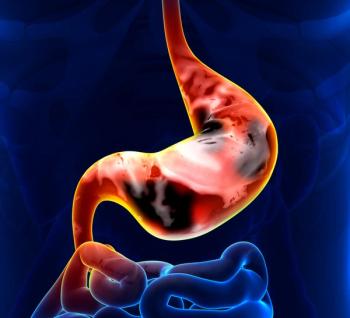
Single Surveillance Visit Reduced CRC Incidence in Adenoma Patients
Attending at least one surveillance visit with colonoscopy benefited most patients diagnosed with intermediate-risk adenomas, according to the results of a retrospective study.
Attending at least one surveillance visit with colonoscopy benefited most patients diagnosed with intermediate-risk adenomas, according to the results of a retrospective study
The study included 253,798 patients who underwent a baseline colonoscopy and polypectomy at one of 17 UK hospitals. Of those, 11,944 patients were diagnosed with intermediate-risk adenomas between 1990 and 2010 and were included in this analysis. Patients were offered surveillance colonoscopy at intervals of 3 years. More than one-half (58%) of patients attended at least one surveillance visit, while 42% of patients attended none.
With a median follow-up of 7.9 years, 210 colorectal cancers were diagnosed.
Patients who attended at least one surveillance visit had a significantly reduced colorectal cancer incidence rate (adjusted hazard ratio [HR], 0.57; 95% CI, 0.40–0.80 for one visit; HR, 0.51; 95% CI, 0.31–0.84 for two visits) compared with patients who had no surveillance.
The researchers divided patients into lower-risk (26%) and higher-risk (74%) subgroups based on polyp and procedural characteristics that have been identified as colorectal cancer risk factors. Without surveillance, patients in the high-risk group had an incidence of 3.3% at 10 years compared with 1.1% for patients in the low-risk group. After a single surveillance visit, the incidence of colorectal cancer at 10 years was 2.8% in the high-risk group and 0.7% in the low-risk group.
Patients with suboptimal colonoscopy, proximal polyps, or a high-grade or large adenoma at baseline who underwent no surveillance had a significantly greater colorectal cancer incidence compared with the general population (standardized incidence ratio [SIR], 1.30; 95% CI, 1.06–1.57). In contrast, patients without these risk factors had a lower colorectal cancer incidence than the general population (SIR, 0.51; 95% CI, 0.29–0.84).
“We conclude from our results that patients diagnosed with intermediate-risk adenomas are at only a small increased risk of developing colorectal cancer after their baseline colonoscopy and polypectomy compared with the general population, especially if they have had a good quality baseline colonoscopy; therefore, it is unclear whether all of these intermediate-risk patients need the currently recommended 3-yearly surveillance by colonoscopy,” the researchers wrote. “Our results emphasize the importance of achieving a complete colonoscopy with good quality bowel preparation. Having a suboptimal quality baseline examination was associated with a doubling in colorectal cancer incidence irrespective of polyp characteristics.”
Newsletter
Stay up to date on recent advances in the multidisciplinary approach to cancer.

















































































